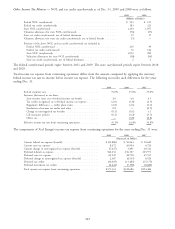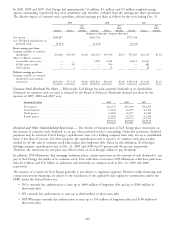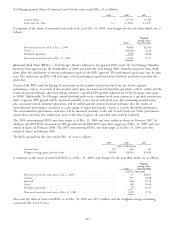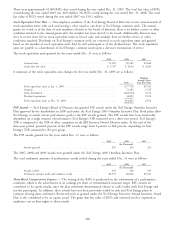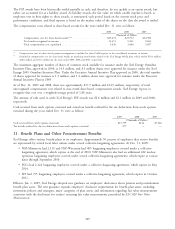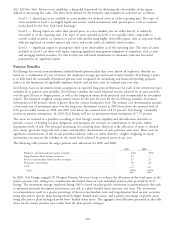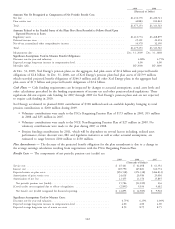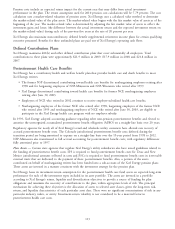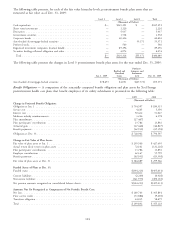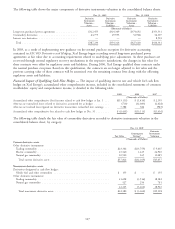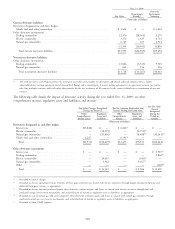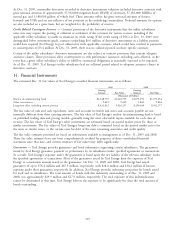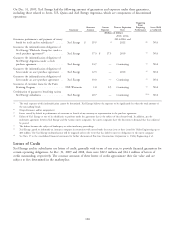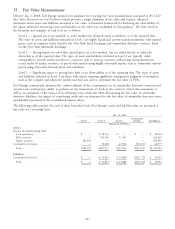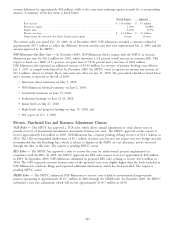Xcel Energy 2009 Annual Report Download - page 123
Download and view the complete annual report
Please find page 123 of the 2009 Xcel Energy annual report below. You can navigate through the pages in the report by either clicking on the pages listed below, or by using the keyword search tool below to find specific information within the annual report.Pension costs include an expected return impact for the current year that may differ from actual investment
performance in the plan. The return assumption used for 2010 pension cost calculations will be 7.79 percent. The cost
calculation uses a market-related valuation of pension assets. Xcel Energy uses a calculated value method to determine
the market-related value of the plan assets. The market-related value begins with the fair market value of assets as of the
beginning of the year. The market-related value is determined by adjusting the fair market value of assets to reflect the
investment gains and losses (the difference between the actual investment return and the expected investment return on
the market-related value) during each of the previous five years at the rate of 20 percent per year.
Xcel Energy also maintains noncontributory, defined benefit supplemental retirement income plans for certain qualifying
executive personnel. Benefits for these unfunded plans are paid out of Xcel Energy’s operating cash flows.
Defined Contribution Plans
Xcel Energy maintains 401(k) and other defined contribution plans that cover substantially all employees. Total
contributions to these plans were approximately $21.9 million in 2009, $17.9 million in 2008 and $21.8 million in
2007.
Postretirement Health Care Benefits
Xcel Energy has a contributory health and welfare benefit plan that provides health care and death benefits to most
Xcel Energy retirees.
• The former NSP discontinued contributing toward health care benefits for nonbargaining employees retiring after
1998 and for bargaining employees of NSP-Minnesota and NSP-Wisconsin who retired after 1999.
• Xcel Energy discontinued contributing toward health care benefits for former NCE nonbargaining employees
retiring after June 30, 2003.
• Employees of NCE who retired in 2002 continue to receive employer-subsidized health care benefits.
• Nonbargaining employees of the former NCE who retired after 1998, bargaining employees of the former NCE
who retired after 1999 and nonbargaining employees of NCE who retired after June 30, 2003, are eligible to
participate in the Xcel Energy health care program with no employer subsidy.
In 1993, Xcel Energy adopted accounting guidance regarding other non-pension postretirement benefits and elected to
amortize the unrecognized accumulated postretirement benefit obligation (APBO) on a straight-line basis over 20 years.
Regulatory agencies for nearly all of Xcel Energy’s retail and wholesale utility customers have allowed rate recovery of
accrued postretirement benefit costs. The Colorado jurisdictional postretirement benefit costs deferred during the
transition period are being amortized to expense on a straight-line basis over the 15-year period from 1998 to 2012.
NSP-Minnesota also transitioned to full accrual accounting for postretirement benefit costs, with regulatory differences
fully amortized prior to 1997.
Plan Assets — Certain state agencies that regulate Xcel Energy’s utility subsidiaries also have issued guidelines related to
the funding of postretirement benefit costs. SPS is required to fund postretirement benefit costs for Texas and New
Mexico jurisdictional amounts collected in rates and PSCo is required to fund postretirement benefit costs in irrevocable
external trusts that are dedicated to the payment of these postretirement benefits. Also, a portion of the assets
contributed on behalf of nonbargaining retirees has been funded into a sub-account of the Xcel Energy pension plans.
These assets are invested in a manner consistent with the investment strategy for the pension plan.
Xcel Energy bases its investment-return assumption for the postretirement health care fund assets on expected long-term
performance for each of the investment types included in its asset portfolio. The assets are invested in a portfolio
according to Xcel Energy’s return, liquidity and diversification objectives to provide a source of funding for plan
obligations and minimize the necessity of contributions to the plan, within appropriate levels of risk. The principal
mechanism for achieving these objectives is the allocation of assets to selected asset classes, given the long-term risk,
return, and liquidity characteristics of each particular asset class. There were no significant concentrations of risk in any
particular industry, index, or entity. Investment-return volatility is not considered to be a material factor in
postretirement health care costs.
113


